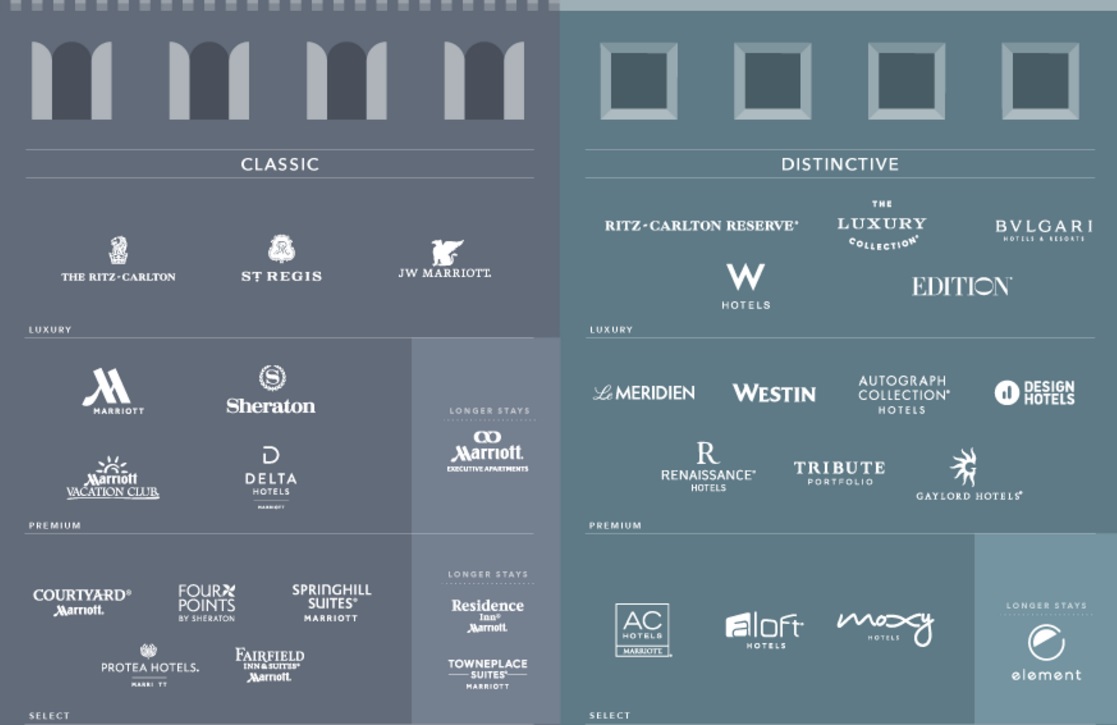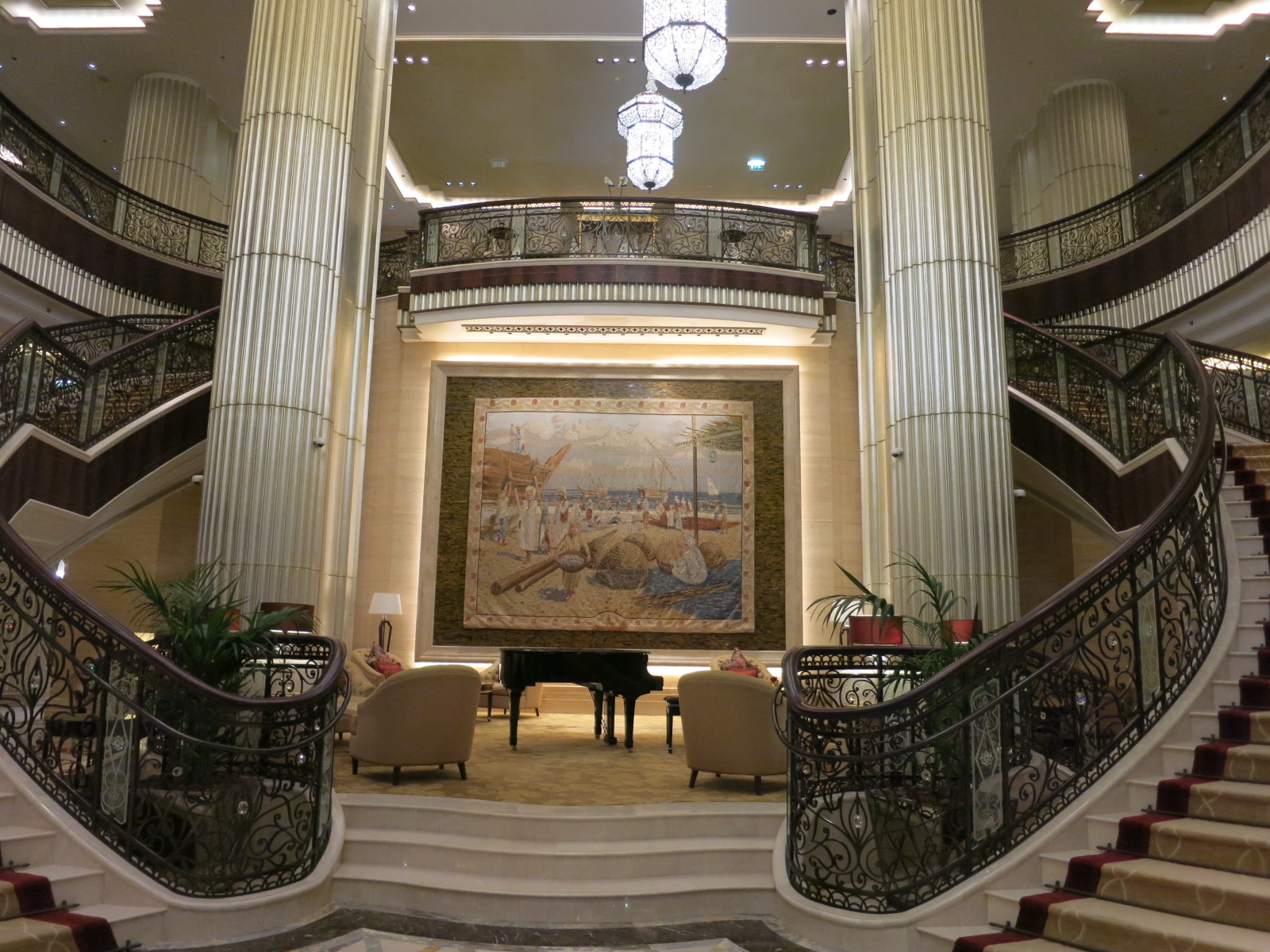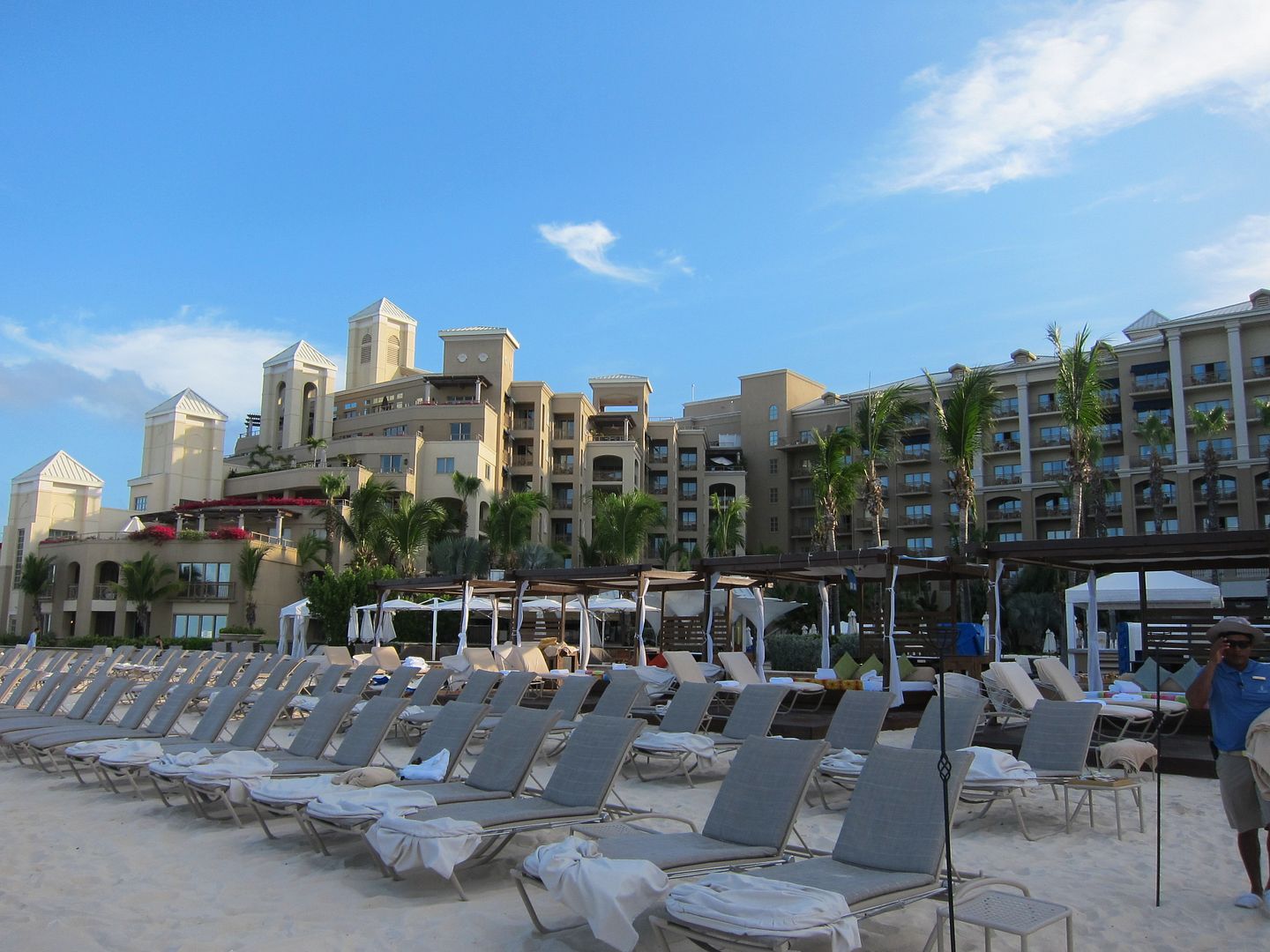When Marriott acquired Starwood, plenty of commentators started to wonder about the future of several of Starwood’s brands. After all, many of them are small — Starwood wasn’t growing as quickly as investors would have liked, hence the selloff in the first place.

Marriott Boca Raton
And clearly many of the brands are duplicative with Marriott’s brands. Not all of the brands perform well in their niche for instance Four Points. Even with Starwood’s Sheraton revival plan the Sheraton brand remains a bit of a mess. There are plenty of higher-end properties especially in Asia (where Sheraton is often nicer than Westin), plenty of serviceable properties in the U.S., and several that drag down the brand. (Sheraton does, to me, mean an excellent bed. I’m a big fan of the Sweet Sleeper.)

View from the Royal Orchid Sheraton, Bangkok
However Marriott doesn’t appear to be shedding any of its now 30 brands.
- More brands means being able to have more hotels in the same market. That grows revenue (eg management fees).
- CEO Arne Sorenson doesn’t think brands even need separate identities. That’s because they don’t really do brand-specific marketing. There’s not much fixed cost to having a distinct brand.
- Marketing is through the loyalty program and having customers book at Marriott.com.
That’s the argument anyway. However in order to earn a revenue premium customers need to understand what a brand stands for. They need to proactively want to book a hotel brand over its competition.

St. Regis Bangkok
At a minimum they need to understand that a brand is part of the Marriott Rewards family in order for them to choose the brand because of the loyalty program. It’s a very small subset of members, indeed, who could identify each brand as part of the program.
As a start along their path retaining all of their brands while trying to help consumers understand and distinguish them, they are dividing all brands into ‘classic’ or ‘distinctive’ as well as Luxury, Premium, Select, and extended stay.

You effectively have a matrix. In the luxury segment you have:
- Classic: Ritz-Carlton, St. Regis, JW Marriott
- Distinctive: Ritz-Carlton Reserve, Luxury Collection, Bvlgari, W, Edition
I’m not sure what universe JW Marriott gets rolled up with St. Regis, or how Luxury Collection is ‘Distinctive’ while St. Regis is ‘classic’. I think there are classic and modern St. Regis properties, and Luxury Collection spans the gamut of truly unique properties around the world with other ‘nice but not quite St. Regis hotels that didn’t have another home until they launched the Tribute un-brand.
Meanwhile apparently Marriott and Sheraton are ‘classic premium’ while Westin, Renaissance, and Gaylord hotels are ‘distinctive premium’.

It seems that to make this work they kind of don’t define what ‘classic’ versus ‘distinctive’ mean. In some cases I take distinctive to mean ‘better’ and in other cases ‘modern’. The fluid definition keeps brands in the box, but it doesn’t really help much with understanding.
I don’t think Marriott itself even really seems to understand the differences, and they seem to be trying too hard. For instance here’s how they lay out the differences between Ritz-Carlton and St. Regis:
“When we think about any of our brands, we start with the consumer and look at what they value,” she said. “With Ritz-Carlton, this consumer is really leaning toward discovery. And for St. Regis, it’s really about status and connoisseurship.” Each company, she says, has a program already in place to cater to these mindsets—and those can be blown up to help articulate the differences more clearly.
“Luxury customers are looking for everything but lean more heavily on Ritz-Carlton for facilitation [to explore a new place] and on St. Regis when they want the hotel to be the destination.” Ritz, she says, is about connecting people to places, while St. Regis itself is the place where people want to see and be seen. “The St. Regis customer is looking for the hotel to serve up performances by jazz legends or signature rituals like midnight supper and St. Regis bloody marys.”

St. Regis Abu Dhabi
Huh? The Ritz-Carlton Grand Cayman is a place guests are less likely to leave than the St. Regis Bangkok or St. Regis Abu Dhabi. And I’m really not sure that guests want the St. Regis New York or St. Regis Rome to be the destination.

Ritz-Carlton Grand Cayman
Marriott’s acquisition of Starwood was about scale. They wanted to be bigger. More brands help make that possible.
They’re going to do their best to distinguish these brands along the way since they want to keep all or at least ultimately as many as possible. They aren’t keeping the brands because they are distinguishable.


I’d imagine part of the issue is that they don’t want to lose the revenue stream from any properties that are already in the portfolio, but that combining brands would lead to issues with property owners? For example, if they hypothetically decided to ditch the Sheraton flag and reflag all performing properties as Marriotts, in a lot of large cities there would suddenly be two or more existing and reflagged Marriott properties within blocks of each other. I’d imagine the management contracts they have with property owners address this (in a way that would discourage Marriott from consolidating flags).
The Skift chart actually shows 31 brands, and I can name at least one ‘extra’ brand to this list: African Pride is a subset of Protea Hotels, but still its own distinct brand for more ‘distinctive’ ‘luxury’ stays. Add the ‘Fire & Ice’ brand that they use for several Protea hotels and they are up to 33. That doesn’t even include other ‘sub-brands’ like Sheraton Suites
Is there really any market that would require all Four Points, Courtyard, and Delta brands to be present to maximize management revenue?
I’d like to think I’m about as sophisticated as they come when it comes to understanding travel brands and there’s a few of these ID totally forgotten existed, let alone were part of Marriott’s portfolio, even before the takeover of Starwood.
I’d say that’s a problem.
@DWT
Yeah, I think you’re right. I don’t know jack about hospitality management contracts, but I have to assume that a hotel’s owner signs his hotel up to be a part of a particular brand, and that Marriott/Starwood can’t just change them willy nilly.
Design Hotels isn’t even their brand, its a Partner…why keep it if they don’t own it, and don’t have much control over it?! They have the size now.
Marriott can’t change brand contracts too easily, but they can stop accepting new contracts for a brand, start transitioning hotels being renewed into a similar brand, and then once the pool dwindles, start offering incentives to convert the rest.
Look at Holiday Inn Select – many of those hotels became Crowne Plazas or regular Holiday Inns. Although it took 5+ years for all of them to be converted, it can happen.
@Gary
One has to figure that Marriott doesn’t actually have a lot of room to reposition brands.
However, branding is important. I used to not care about this stuff, but as I get older, I do. For instance, I don’t like the “Luxury Collection” *brand*. Since the “LC” name doesn’t appear in the hotel name itself, it doesn’t make as big of an impression as a brand name that does. Second, “LC” to me isn’t a very distinctive name, so half of the time I forget it’s an actual brand.
Point being, LC brand hotels just look independent hotels, and it’s really hard to know that they’re part of SPG unless you’re booking through Starwood’s website.
The proliferation of hotel brands has never made sense to me. I thought the value of having a “brand” was so that consumers would be familiar with your product, and this familiarity (and, hopefully, association with quality) would enable you to charge more money for your product. Even frequent travelers are clueless about many of these hotel brands, and normal hotel consumers wouldn’t have the faintest idea of what the brand meant. When Kemmons Wilson was rolling out Holiday Inns across America, he made money because people knew what they would get when the showed up. Yet, it seems, branding isn’t very valuable in the modern hotel business. Perhaps having a 4 1/2 star rating on TripAdvisor is worth more.
@ Joelfreak: Starwood does own Design Hotels, which means Marriott owns Design Hotels–but they own the distribution channel, not the management or ownership of the properties themselves. SPG has been moving the properties into the SPG Design unbrand as they coordinate reservation distribution systems…and based on which Design Hotel owners wish to make that move–since Design Hotels is nothing but a distribution arrangement and not a management arrangement. Those owners cannot be forced to do anything.
@DWT: I don’t know if that’s correct. Look at Washington, D.C. There are heaps of Marriott portfolio hotels within blocks of each hotel–sometimes the same brand.
More generally, I can’t for the life of me tell the difference between a good Marriott and a good Sheraton is increasingly difficult. Both brands have heaps of older properties in corporate office parks and outer suburbs that are closer to a Holiday Inn or Radisson than an international Marriott or Sheraton in Asia and Europe.
In Asia, you can find staff at a Marriott or Sheraton — let alone a Westin, J.W. Marriott, Ritz-Carlton or St. Regis — who would wipe your butt or jump off the top of a building, if you asked nicely.
I wish Marriott would do more to address the huge disparities that exist between its brands across international markets. I can only imagine how frustrating it is for an Asian businessman used to the exceptional service of the Marriott Singapore or J.W. Marriott Dubai to stay at a property in the United States, where the staff seldom speak a second language (except for maybe Spanish) and the restaurant experience is like eating at Denny’s.
Marriott obviously thinks it needs to find a distinction between some of its 30+ brands…but this is a clumsy start. I’d say generally that Classic is your normal branding and Distinctive are more lifestyle-oriented…but there are plenty of holes in that philosophy.
Ironically, though, I would say the RC vs StR distinction is actually apropos, but not in the way it’s framed by Marriott. Ritz-Carlton properties rarely make me want to explore that destination…whereas I tend to explore some destinations because I’m interested in staying at the St Regis there. In other words, it wouldn’t surprise me to learn that far more St Regis loyalists plan travel based on where there is a St Regis…versus the Ritz-Carlton loyalist who happens to stay at Ritz-Carlton when there is one nearby. But it’s still a desperate attempt to create distinctions that won’t matter to most.
Including JW with St Regis and Ritz Carlton is the most glaring and obvious screw up for this approach. It may be a ploy by Marriott to reposition JW as more luxury than its perceived now, but i seriously doubt the luxury clientele is gonna fall for that obvious nonsense!
Silly rabbit, brands are about owners, not customers.
Imagine Jony Ives reading aloud the explanation of the positioning of St Regis vs RC. It then starts to feel beleiveable.
But let’s address the big question: where should I stay if I’m a Discoverist? 🙂
Clearly this has not been a great fall for hotel branding operations.
Way too many brands… But, perhaps, as mentioned above, Marriott is going to be pursuing a strategy of slowly converting/re-flagging properties as their contracts expire.
MAR+SPG has no choice but to place JW where it is on that chart. They’re forcing items into high medium low, so one tier lower means putting JW next to Delta Hotels on that chart, which makes EVEN less sense.
Due to corporate discounts available to me, my most usual stays are either at Classic-Luxury or Distinctive-Premium. (And typing this comment from Ritz Carlton Chengdu)
Spoke to a Sheraton GM last week that I know very well. The GM indicated that Marriott is looking to change the bathroom products that Sheraton now features (Bliss inspired) to MATCH those at Marriott Hotels. Huh ? What? 2 brands in the company having almost the same products …sounds like maybe a merging of the Marriot Hotels and Sheraton brands ?
It diest matter, they will take out all the desks and dressers and night stands with drawers because that’s what millennial want.
Given that recent multimillion dollar fiasco , what more did you expect?
Lot of brands but as noted, there are existing covenants, it may not be smart to have too many flags close to each other, and hey, there’s a brand for everyone no matter what your pricepoint. Budget coverage, but also a ton of luxury properties at the top end.
Could be a whole lot worse for sure…like Hilton, where you’re choosing from ~50 properties globally (~1% of the total portfolio, shockingly low) if you want true luxury.
What is the difference between TownPlace Suites and SpringHill Suites?
What is the difference between Courtyard and Fairfield Inn?
Even before merger, some of these brands lacked distinctiveness. Many consumers can’t tell them apart.
In some areas with multiple Marriotts they will brand one the “Marquis.” Dubai and San Francisco are examples of that.
If you ask people to list out every Marriott/Starwood Brand off the top of their head, most people won’t get past 15. I couldn’t get past 22 and I have stayed hundreds of nights in Marriott properties.
@Cedric: Residence Inn and Courtyard use the same toiletries, at least the properties where I have stayed. I can’t speak for Fairfield Inn.
@Beachfan: Marriott has actually backtracked and is putting the desks back into the new rooms.
Look at the Novi/Livonia/Southfield suburbs of Detroit. The only full-service hotels are a Westin (average) and Marriott ( one of the worst Marriotts in the country) in Southfield; a Marriott (average, but good food) and Holiday Inn (always empty) in Livonia; and a Crowne Plaza (tired, old property), Renaissance (renovated a couple of years ago) and Sheraton (renovated a couple of years ago) in Novi. These hotels are all within a 15-minute drive of each other.
The Southfield and Livonia Marriotts are the epitome of hotels that don’t really make sense. At best they’re glorified 3-star Holiday Inn properties with NOTHING in common to a good Marriott in Asia or Europe. They were built when these locales had much stronger economies and were home to more corporate offices. You can get rooms at either hotel for under $90.
That’s probably why most of the new hotels being built are limited-service Hampton Inn, Holiday Inn Express, Courtyard and Hyatt Place properties. The owners and management companies can get the same amount of revenue without the overhead and burden of a full-service hotel.
There’s also the BRAND requirements and standards that keep each brand unique. Although I too think that some of the brands – within the original Marriott group as well as some of the Marriott & Starwood Group should merge brands – especially in the lower tier & extended stay type brands.
But if Marriott starts to alter many of the standards in brands such as W, Aloft, & Westin – I’m moving to Hyatt.
My thoughts on merging brands:
Marriott Hotels & Resorts should merge with Sheraton – it’s basically the same model.
See, for example, Chapter 135 of the Wisconsin Statutes, regulating dealership terminations. Under the law, a “dealership” is almost any franchise to sell goods or services identified by a trademark. Cancellation of a dealership agreement is prohibited except for “good cause”. This type of franchise law exists in some but not all states, and is also common in parts of Canada and in many overseas jurisdictions. And, marketing reasons, or “brand realignment” are not considered “good cause”.
So, Marriott can’t simply get rid of excess brands without mutual agreement with the franchisee. It becomes a difficult and resource intensive exercise.